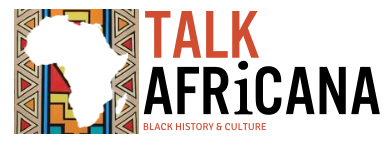The Maasai people in East Africa have stuck to their traditional way of life for decades, making them one of the few African tribes dedicated to preserving their cultural practices and traditions. While they hold onto their traditional beliefs, the Maasai culture is also undergoing a unique transformation over the years. Most Maasai live in Kenya, with some residing in Tanzania. Here are 10 Interesting Facts You Didn’t Know About The Maasai Tribe Of East Africa.

Interesting Facts You Didn’t Know About The Maasai People Of East Africa
1. The Maasai People
The Maasai people of East Africa live in southern Kenya and northern Tanzania along the Great Rift Valley on semi-arid and arid lands. They occupy a total land area of 160,000 square kilometers with a population of approximately one half million people.
2. Their Love For Cattle Blood

On special occasions, such as when a person is circumcised, gives birth or is sick, the Maasai people may drink cattle blood as it is considered to be good for the immune system. Additionally, the elders of the tribe often use cattle blood to alleviate intoxication or hangovers after a night of drinking alcohol.
3. Livestocks Are a Social Utility

4. Women Are Gatherers While The Men Are Hunters
Maasai homes are called Inkajijik. They are rectangular and loaf-shaped and constructed from the land.
The women of the tribe are responsible for building the houses using materials such as sticks, grass, mud and even cow dung. Women are also responsible for supplying water, gathering firewood, milking the livestock and preparing meals for their families. While The men of the tribe, in addition to being hunters and “warriors”, are responsible for building fences made out of acacia thorns, these fences are primarily used to prevent lions from attacking the tribe’s livestock.
5. Circumcision Is Still A Norm
The circumcision ceremony holds paramount significance as the primary initiation rite in Maasai society. Traditionally, both men and women in the Maasai community eagerly undergo this initiation, typically conducted shortly after puberty. However, it is noteworthy that in the face of contemporary challenges in 21st-century Maasai society, a growing number of young Maasai men and women no longer partake in circumcision.
6. They Frown On Farming
The Maasai rarely farm (they only do so when they have no other choice). This practice is frowned upon because they believe that manipulating the land for crop farming is considered a crime against nature. Maasai feel that once land is cultivated, it is no longer suitable for their precious livestock to graze on.
7. They Worship Engai
The Maasai hold a deep respect for the forces of nature, especially thunder, lightning, and rain, considering them both blessings and retributions upon the tribe.
In referring to God or the elements, the Maasai employ the term “engai,” believing that these natural phenomena shape the very earth they inhabit. Engai is the focal point of Maasai prayers, representing a spiritual force that governs the entire universe.
8. Maasai Traditional Meal

The Maasai traditionally depend on a diet centered around meat, milk, and blood extracted from cattle to fulfill their protein and caloric requirements.
Blood consumption is reserved for special occasions and is provided to circumcised individuals, women who have recently given birth, and those who are unwell. Additionally, elders regularly consume blood, using it as a remedy for intoxication and hangovers.
9. Traditionally They Do Not Bury Their Dead
Because the Maasai do not believe in the afterlife, their burial practices are traditionally very minimalistic. Most dead bodies are simply thrown to the wild forests for scavengers because burials are believed to harm the soil and is reserved only for some chiefs.
10. The Future Of The Maasai Cimmunity
The future of the Maasai is uncertain at this point. One thing, however, is certain that the Maasai culture is quickly eroding at the expense of civilization.

